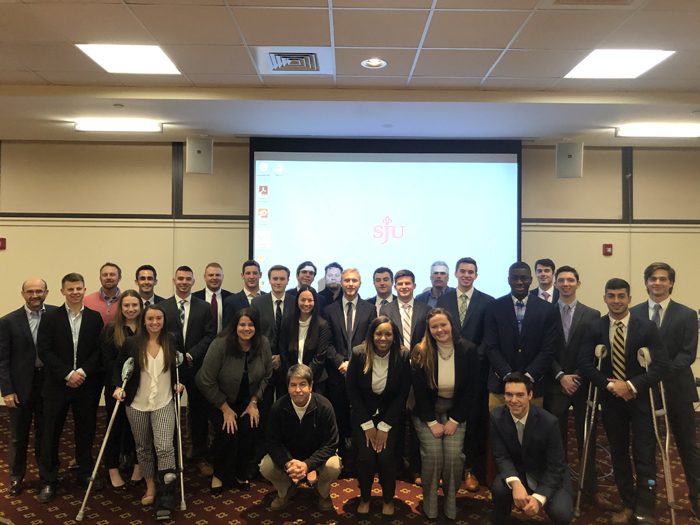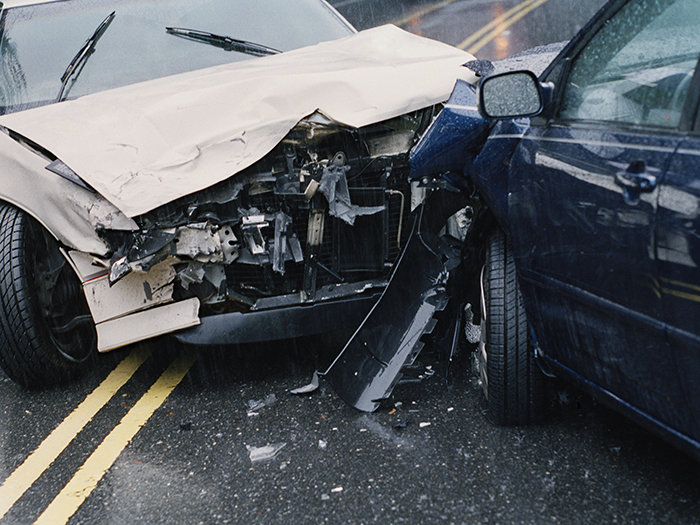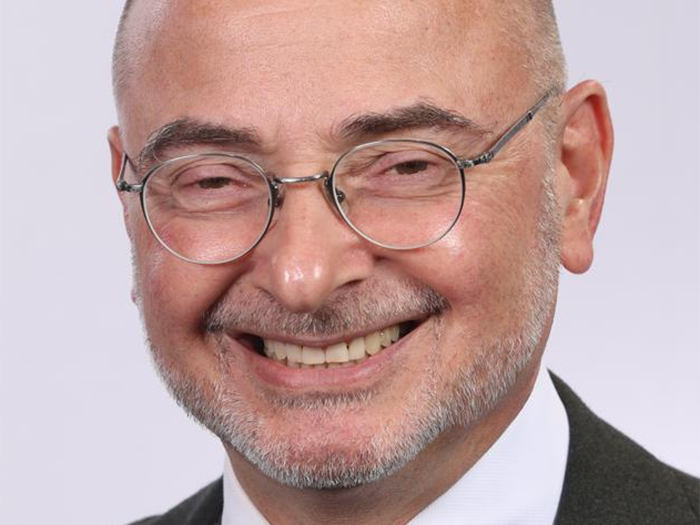This University Is Looking to the Future of Insurtech Through the Eyes of Its Students

It’s no secret that Insurtech is taking the insurance industry by storm. From wearable devices that improve safety to AI that analyzes claims and maps trends, Insurtech is helping companies mitigate risk and it is improving underwriting decisions.
“Whether it’s a wearable device like a sensor, or is something you can attach to a vehicle, or satellite imagery, you can use Insurtech to make faster, quicker, better underwriting decisions,” said Mike Angelina, executive director of the Maguire Academy for Insurance and Risk Management at St. Joseph’s University.
When it comes to Insurtech, young people, who have grown up using technology and are comfortable integrating it into their daily lives, may be able to find some unique solutions to problems facing the insurance industry.
“Someone who’s 22-years-old can maybe put some fresh eyes onto some of these problems in the industry,” Angelina said.
At St. Joe’s, students in the insurance and risk management program had a chance to develop ideas for Insurtech solutions and present them in front of a panel of industry judges for a small cash prize.
The competition was judged by Angelina and John Henry of Datacubes, Walt Baker, associate director of the Maguire Academy for Insurance and Risk Management, Doug Redden of Altair Integrated Services and Kevin Rettberg of AssuredPartners.
The student ideas, which focused on property, commercial auto and workers’ compensation insurance, often make use of technology and data that’s already available in innovative ways and they just might be able to improve your business and save you money.
Using Instagram to Transform Property Underwriting
Satellite images from Google Maps, photo sharing apps like Instagram and review sites like Yelp have created a plethora of publicly available images.
The Commercial Property Apps team of students at St. Joe’s wants to use AI to analyze those images for risk factors and exposures.
Their idea, which they called Image Spot, is to create a software that analyzes both photos taken by the business owner and those drawn from publicly available data, like social media and Google Earth, in order to underwrite property exposures. The idea was chosen for the second place prize by the judges.
“This data is all around us and a lot of it’s publicly available, so why not get a software that uses it all?” Alexander Sakena, a junior at St. Joe’s and one of the students who developed the idea, said.
In addition to using AI to analyze photos of the building and the surrounding areas, the group wants to employ wireless sensor networks throughout the properties to monitor the conditions of the property.
The sensors would be able to detect things like changes in temperature that might cause a pipe to burst or wind speeds that could cause damage to a building and they would be able to notify the business owners and their insurers.
In some cases, these early notifications could allow an owner to react before any damage occurs.
“It basically acts as a loss reduction technique because it senses if something it’s going to notify the insurer before anything happens,” Sakena said. “Which will also reduce the quote.”
Angelina spoke positively about the students’ idea: “They could literally almost underwrite the risk without having to go there with all this information,” he said.
Bridging Fitbits, Distracted Driver Apps and Commercial Auto
Two of the groups who presented during the contest discussed how tech products that are already on the market can be applied to the commercial auto insurance space to mitigate risk and improve the underwriting process.
The first place team, CT Edge, proposed having truck drivers use wearable devices, like Fitbits and Apple Watches, that track their heart rates in order to detect whether drivers were drowsy or driving under the influence.
If the device detected an irregularity, it would contact the business owner so they could reach out to the driver and attempt to solve the problem before an accident occurs.
“The driver’s heart rate could send some signals about them that could prompt you to maybe call them and say, ‘hey keep your eyes on the road,’” Angelina said. “If the device can tell the person is intoxicated, then the car probably wouldn’t start.”
In addition to tracking their biometric data, the devices could also be used to score drivers. That way commercial auto companies could track over time which of their drivers tend to be more tired on the road.
“You’re understanding good drivers vs. bad drivers, so you’re able to make better underwriting decisions,” Angelina said.
Another group looked at how telematic apps like those from Cambridge Mobile Telematics and YoungDrive could be applied to the commercial auto space.
These apps use the front- and back-facing cameras on smartphones to monitor driver behavior and they’re able to track things like how quickly a driver is breaking, the speed of the car and whether or not a driver is paying attention to the road.
“We would generally use these ideas, these technologies, to make the roads safer, prevent loses, and also have new metrics for underwriters to see how the drivers are doing instead of just using their past losses. It’s also using the drivers current behavior as well,” said Matthew Scarpill, a junior whose group presented this idea to the judges.
While some personal auto-insurers have begun using this technology, it hasn’t really broken through in the commercial auto space. The team estimated that 15-20% of commercial auto losses could be eliminated using the technology.
Overall, Angelina said that the judges were impressed with the ideas students had for using technology to improve the insurance industry.
“When you see a seasoned veteran of the insurance industry for 25 years say, ‘wow that’s a really good idea,’ I think that’s really cool,” Angelina said.
So remember, the next time you feel tempted to snip at a young person for using their phone, they just might be leveraging their knowledge of technology in a way that could save your business money. &










